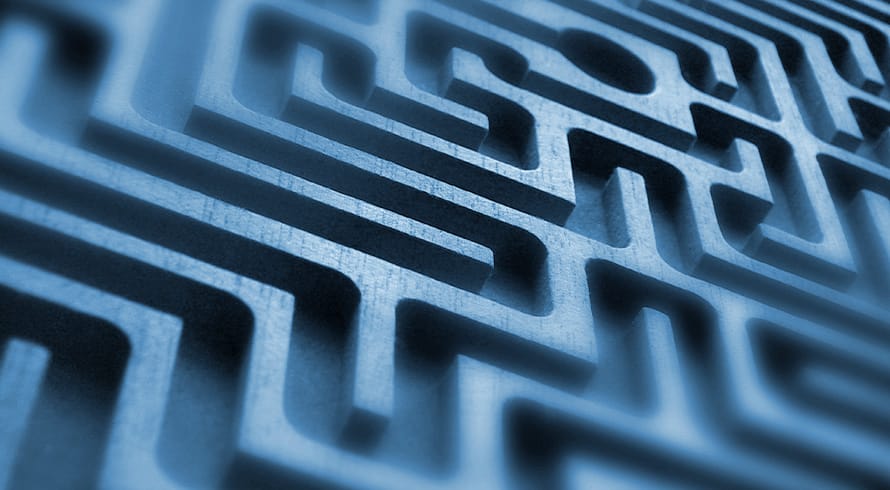Capital v Revenue: the taxpayer prevails
In Commissioner for the South African Revenue Service v Capstone 556 (Pty) Ltd (20844/2014) [2016] ZASCA 2 (9 February 2016), the Supreme Court of Appeal (SCA) had to deal with this very issue. The SCA had to decide two questions:
- whether the share sale of the taxpayer, Capstone, of approximately 17.5 million shares in JD Group Ltd (JDG), through which it made a profit of R400 million, constituted revenue or was capital in nature; and
- whether an indemnity settlement paid by the taxpayer after it had sold the shares, formed part of the base cost of the shares for purposes of capital gains tax (CGT).
The matter was an appeal from the full bench of the High Court, Western Cape Division (Capstone 556 (Pty) Ltd v Commissioner for the South African Revenue Service 2014 (6) SA 195 (WCC); 77 SATC 1), on which we reported in our Tax Alert of August 2014.
Facts
When Profurn, a JSE listed company in the retail furniture industry, had run into serious financial difficulties by the end of 2001, it prompted two of its largest creditors, FirstRand and Steinhoff, to propose a financial rescue plan. Profurn’s imminent liquidation would threaten the stability of South Africa’s retail furniture industry. FirstRand ascertained that Profurn needed to reduce its debt by approximately R300 million and required a capital injection of approximately R600 million to survive. Subsequently, discussions took place between Lategan, Daun, Jooste and Sussman who agreed to carry out the rescue operation through the conclusion of a number of financing transactions which included the creation of a special purpose vehicle, the taxpayer. Daun, a wealthy German businessman and director of Steinhoff, was appointed as one of the taxpayer’s directors. A memorandum of understanding (MOU) signed by Daun on 26 June 2002, reflected what the parties had agreed on and the agreements that would be concluded to effect the rescue operation. The parties also agreed that this was the effective date on which the taxpayer acquired the risks and rewards attached to the JDG shares. All parties agreed that the rescue operation would be very risky and would probably require a period of three to five years.
The transactions envisaged in the MOU had to be amended to the following: FirstRand acquired a 78.8% shareholding in Profurn. JDG and Profurn then merged and FirstRand acquired approximately
42 million JDG shares. After Daun invited Jooste to take part in the transaction, the taxpayer was restructured and it purchased approximately 17.5 million shares. The taxpayer financed this purchase through a loan received from its holding company, BVI, which also led to the possible payment of an ‘equity kicker’ to BVI. The possible payment of the ‘equity kicker’ arose as the taxpayer’s loan from BVI was funded by a loan that BVI received from Gensec and which required BVI to pay the equity kicker in addition to the loan. The equity kicker represented a portion of the growth in the value of the JDG shares, calculated by means of a formula. The taxpayer had actually paid the equity kicker even though it was not party to the loan agreement between BVI and Gensec. The taxpayer also incurred a contingent liability in acquiring the shares, in the form of an indemnity to FirstRand in the amount of R62.5 million.
On 29 April 2004, the taxpayer sold its JDG shares and realised a profit of R400 million. The taxpayer’s liability in respect of the equity kicker amounted to R45,123,050. The contingent liability of R62.5 million was subsequently settled after another party who had acquired JDG shares, including a concomitant contingent liability to FirstRand, Daun et Cie, agreed to pay the taxpayer’s full contingent liability in return for the taxpayer paying it R55 million (indemnity settlement). The taxpayer incurred the liability to pay the R55 million in its 2005 year of assessment.
Issues to decide
The SCA had to decide whether the proceeds from the share sale was income of a revenue or capital nature, and whether the ‘equity kicker’ and indemnity settlement formed part of the base cost of the JDG share acquisition, in terms of paragraph 20 of the Eighth Schedule to the Income Tax Act, No 58 of 1962 (Act). The parties agreed that the High Court was correct in finding that the equity kicker constituted borrowing costs and that a third thereof could be added to the base cost of the shares, in terms of an exception to paragraph 20(2) of the Eighth Schedule.
Was the income of a capital or revenue nature?
In essence, s1 of the Act defines ‘gross income’ as the total amount received by or accrued to a person, excluding receipts or accruals of a capital nature. In interpreting this definition, the SCA referred to a number of previous decisions on this issue and stated that the applicable principles in the current matter were as follows:
- One must look at the intention of the taxpayer. Where the gain is made in the operation of business in carrying out a scheme of profit making, the profit will be revenue in nature. This would be ascertained by considering the purpose for which the taxpayer entered into the transaction. A company’s intention at a given time is determined by looking at the intention of the persons who were in effective control of the company at that time.
- One must look at the nature of the taxpayer’s business activities.
- The period for which the asset is held and the period for which it was anticipated to be held at the time of acquisition are relevant.
- When dealing with an investment, the nature of the risk undertaken has a bearing on whether the transaction is aimed at building up the value of the taxpayer’s capital or directed at generating revenue and profit.
- In many commercial situations there may be no clear intention at the outset and it may then be accepted that the taxpayer’s future intentions were indeterminate.
The SCA stated that the transaction must be considered in its entirety from a commercial perspective and not be broken into component parts or subjected to narrow legalistic scrutiny, when applying these principles.
In applying these principles to the facts, the SCA held that the purpose of the transaction should thus be determined as at 26 June 2002 when the MOU was concluded. The High Court also held that this was the case. On the question of who was in control of the taxpayer, the SCA agreed with the High Court and held that Daun was the ‘brain’ and ‘mind’ of the taxpayer and was in de facto control of the JDG shares from their effective acquisition to their disposal, as the decision when to sell was solely his. Daun, who the SCA found to be a credible witness, acquired the JDG shares as he believed that the rescue operation could be successful. The resale of the shares at a profit was one of several possibilities he initially considered. Daun’s investment was very risky as it was made in the hope that Sussman’s managerial skills would make the rescue successful by averting Profurn’s imminent liquidation. Daun committed himself to the investment without knowing how long his commitment would need to last.
The SCA rejected SARS’s argument that Daun’s intention became one of profit making when he decided to sell some of the shares to Steinhoff as part of a book-building exercise Steinhoff had undertaken. Daun testified that he only decided to sell after discussing it with Sussman and after his wife had convinced him that he was overexposed in South Africa. Steinhoff’s offer to sell pursuant to the book building exercise, was thus merely fortuitous. The SCA also rejected SARS’s argument that the short-term nature of the loan from BVI and the nature of the equity kicker indicated an intention to fund the loan repayments by selling the shares. This was because the loan agreement was entered into on 5 December 2003, long after the MOU and in any event, the equity kicker was payable irrespective of whether the shares were sold or not. Based on Daun’s evidence, which was corroborated by a number of other witnesses, the SCA held that the proceeds of the JDG shares were capital in nature.
Did the indemnity settlement form part of base cost?
This issue was heard by way of a cross-appeal brought by the taxpayer. The High Court had found that the indemnity settlement did not form part of the base cost of the shares as it was entirely separate from the acquisition of the JDG shares. With regard to the indemnity settlement, the SCA referred to paragraph 20(1)(a) of the Eighth Schedule of the Act, which states that the base cost includes “expenditure actually incurred in respect of the costs of acquisition” of an asset. The words ‘expenditure actually incurred’ refers to an unconditional legal obligation to pay and the words ‘in respect of’ connote a causal relationship. As the unconditional legal obligation to pay R55 million to Daun et Cie in terms of the indemnity settlement replaced the contingent obligation to FirstRand, the causal link between the acquisition of the shares and the indemnity settlement remained intact.
Costs
The SCA held that SARS had to pay all the taxpayer’s costs in opposing the appeal and the costs incurred by the taxpayer in the cross-appeal, including the costs of two counsel.
Comment
This case confirms the principle that to determine whether an amount constitutes capital or revenue will always be a question of fact and that courts will not follow a one-size-fits all approach. In light of the increase in the CGT rate to 80%, which applies as of 1 March 2016, as opposed to 50% at the time the shares were sold, the case raises an interesting practical issue, especially for companies who decide to embark on litigation of this nature in future. Based on the facts in this case, had the shares been disposed of after 1 March 2016, the taxpayer would have paid tax on the sale at an effective rate of 22.4%. On an amount of R400 million, this would trigger a tax liability of R89,600,000. Had the amount been classified as income in terms of s1, the taxpayer would have been liable to pay tax at the rate of 28%, which would amount to R112 million and amounts to a difference of R22.4 million. The SCA’s finding that the obligation to pay the indemnity settlement formed part of base cost, would have reduced the taxpayer’s tax liability by a further amount of R12,320,000. On the same facts, the successful litigation would have reduced the taxpayer’s tax liability by approximately R34,720,000 and would most likely have been worth the taxpayer’s while, from a business and financial perspective. However, considering the high cost of and risks attached to litigation, companies would be well advised to do the math and count the possible costs of litigation, before they decide to challenge SARS’s assessment on whether an amount constitutes capital or revenue.
The information and material published on this website is provided for general purposes only and does not constitute legal advice. We make every effort to ensure that the content is updated regularly and to offer the most current and accurate information. Please consult one of our lawyers on any specific legal problem or matter. We accept no responsibility for any loss or damage, whether direct or consequential, which may arise from reliance on the information contained in these pages. Please refer to our full terms and conditions. Copyright © 2026 Cliffe Dekker Hofmeyr. All rights reserved. For permission to reproduce an article or publication, please contact us cliffedekkerhofmeyr@cdhlegal.com.
Subscribe
We support our clients’ strategic and operational needs by offering innovative, integrated and high quality thought leadership. To stay up to date on the latest legal developments that may potentially impact your business, subscribe to our alerts, seminar and webinar invitations.
Subscribe



